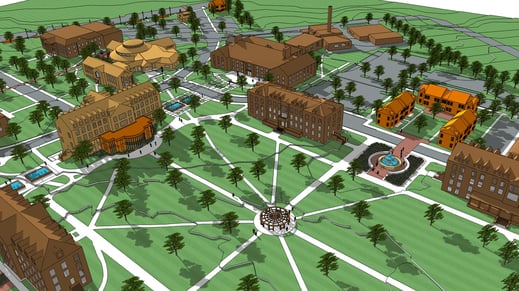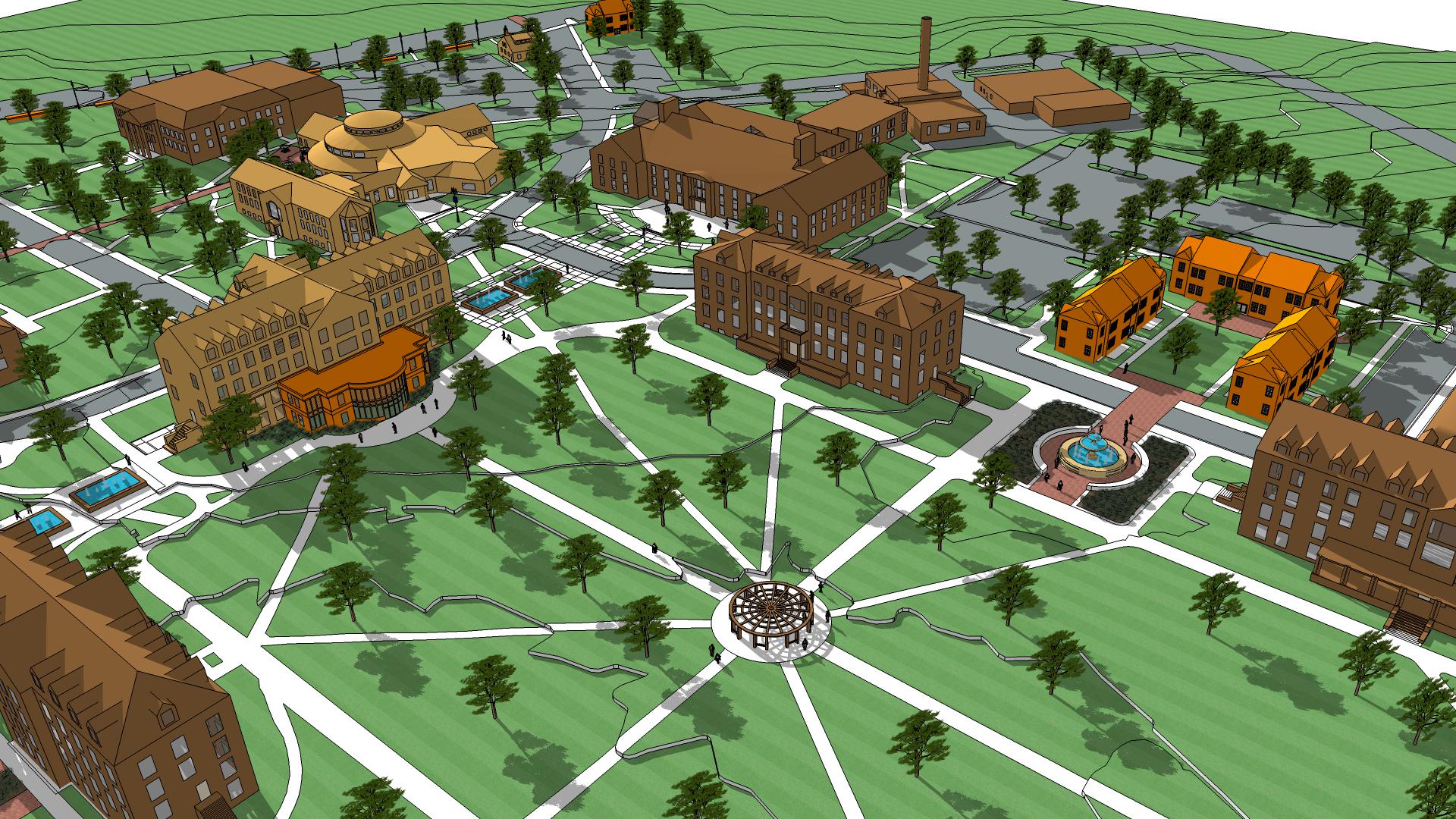
April 26 2019
The following text is an excerpt from C. C. Strange & J. H. Banning's 2015 work, "Designing For Learning: Creating Campus Environments for Student Success," in which the authors describe four types of institutions defined by their impact upon their surrounding communities:
Another important aspect of sense of place on the college and university campus is how it is connected to other places (Cronon, 1992; Cresswell, 2004), and in particular to the community in which it resides. “Do the patterns of open space and building that are conventionally associated with ‘campus’ have a place within neighborhoods that the institution influences? Conversely, should the apparatus of the city [or community] have something to say about how campus spaces are formed?” (Lyndon, 2005, p.3). Institutions engage in place building for purposes of situating themselves as one entity within a larger environment. Thomas (2004) and Thomas and Cross (2007) conceptualized four such possibilities.
-
Exploitive institutions view themselves as independent agents, with little to no obligation to the places in which they are located; the larger community is thus exploited as a resource for their use to fulfill organizational needs.
-
Contingent institutions consider themselves part of, but having no specific responsibility to, the larger community; they look to what the community can do for them and in turn agree to not disturb or question the norms of the community.
-
Contributive institutions see themselves as contributing in some way to the well-being of the larger community, often times through fundraising efforts.
-
Transformational institutions see themselves as interdependent change agents within the larger community, who are trying to improve the conditions of both through various partnerships.
After reading this text, our campus planning team has the following response:
What are the measures we use to determine our effectiveness? Often they are a measures that compare us with other institutions. The higher education landscape is replete with instruments designed to convey a college’s or university’s effectiveness and rank institutions against one another. While well intentioned and useful to some extent, internal comparison loops miss a true assessment of an institution's fulfillment of its mission; institutions do not exist to be ranked against another institutions.
Something to consider: what if we measured ourselves by how our next-door neighbors were doing? What if a metric we used within our self-assessment and our external assessment was the degree to which our surrounding neighborhoods, families, businesses, public entities, and communities were thriving? As institutions, do we exist for ourselves, for a number, or for the betterment of society? The challenge of Thomas (2004) and Thomas and Cross (2007) provides us with language for the various postures institution may take with regard to their surrounding neighbors, communities, regions.
So let's ask: what would it look like if an institution, instead of basing its effectiveness upon an external, perhaps arbitrary ranking, understood its effectiveness by assessing the flourishing of its neighbors?
What do you think?
Read more about placebuilding at rural colleges and universities in this featured blog by Dr. Jennifer deCoste, Partnerships & Placebuilding in Rural Higher Education.
Find out more about how the Credo Campus Master Planners think about space, community, and student success by visiting our Campus Master Planning page, or you can view some of their amazing work by clicking through our Campus Master Planning Portfolio.
Related Blog Posts
Recent Posts
- Richard Dunsworth, J.D., To Receive 12th Annual Courageous Leadership Award December 16 2024
- Meet the 2024 Credo Values Award Recipients August 27 2024
- What is Executive Coaching, Really? June 25 2024
- Credo & The Constructive Dialogue Institute Announce A New Partnership For Higher Education Leadership Development March 7 2024
- Celebrating Women And Gender-Diverse Learners & Leaders February 28 2024
Categories
- Strategy
- Leadership
- Student Success
- Student Success & Retention
- Enrollment
- Pivot
- Strategic Planning
- Leadership Development
- News
- Strategic Enrollment
- Campus Planning and Architecture
- Moving the Needle
- Data
- Research
- Retention
- Campus Master Planning
- Enrollment & Financial Aid
- Academic Programming
- Campus Planning
- Thriving
- Admitted Student Research
- Architecture
- Finance
- Advising
- Admissions




